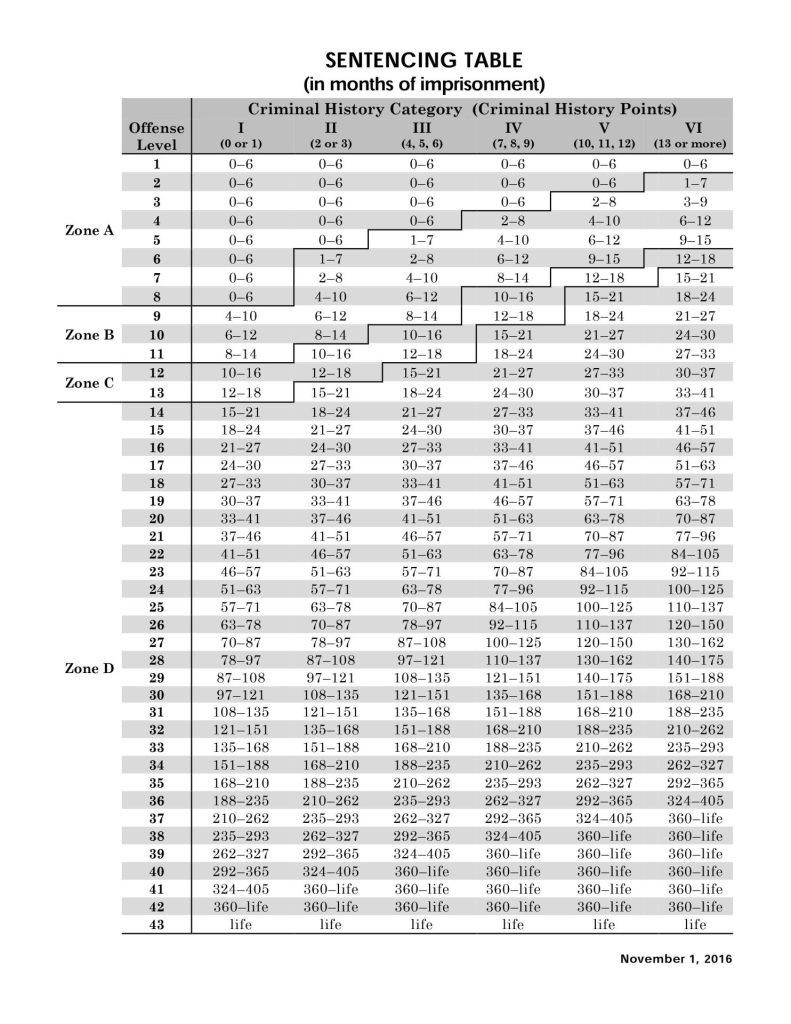Hire a Prison Consultant with
OVER 20 YEARS EXPERIENCE
We've helped over
Clients
Return to their families as quickly and safely as possible.
The United States Sentencing Guidelines use a detailed and systematic approach to determine sentences for federal crimes, and criminal history plays a significant role in this process. Here’s a general overview of how criminal history is determined under these guidelines:
Criminal History Points System:
Prior Felonies: Each prior felony conviction for which the defendant received a sentence exceeding one year and one month is allocated three criminal history points. This weighting reflects the gravity of felony convictions.
Prior Misdemeanors and Petty Offenses: Convictions for misdemeanors and petty offenses are typically assigned one criminal history point each. These lesser offenses include crimes that are not as serious as felonies.
Recency of Criminal Activity: The guidelines also consider the timing of past offenses. Additional points are given for crimes committed shortly before the current offense or while the defendant was under another criminal justice sentence (like probation or parole).
Concurrent Sentences and Exclusions:
When multiple sentences were imposed on the same day, they are combined for point calculation. Some past crimes, especially those committed by juveniles or minor infractions, may not contribute to the criminal history score.
Determining the Criminal History Category: The accumulated points determine the criminal history category, which ranges from Category I (the lowest level of prior criminal activity) to Category VI (indicating extensive criminal history).
Offense Level Calculation:
Base Offense Level: Each type of federal crime has a predetermined base offense level. This level is the starting point for calculating the offense severity.
Specific Offense Characteristics: The base level is adjusted for specifics of the crime. For example, in a theft case, the amount stolen would influence the offense level, while in a violent crime, the use of a weapon would be a critical factor.
Role in the Offense: The defendant’s role in the crime leads to further adjustments. A leading role might increase the offense level, whereas a minor or peripheral role could decrease it.
Obstruction or Acceptance of Responsibility: Additional points may be added for obstruction of justice, or subtracted if the defendant demonstrates clear acceptance of responsibility for their actions.
The Sentencing Table: The Sentencing Table is a matrix where the offense level intersects with the criminal history category. This intersection provides the guideline range for the sentence, typically expressed in a range of months of imprisonment.
Adjustments and Departures: The guidelines permit adjustments or departures from the standard calculations in specific situations. This could include circumstances like substantial assistance to authorities, or unique aspects of the offense or offender.
Judicial Discretion and Sentencing Review: Judges have discretion to impose sentences outside the guideline range. However, such sentences are subject to appellate review for reasonableness, ensuring they align with the principles of fairness and consistency.
This system, with its focus on both the current offense and the defendant’s criminal history, seeks to ensure fair and consistent sentencing in federal courts. However, its application can vary significantly, influenced by the unique facts and circumstances of each case
It’s important to note that the U.S. Sentencing Guidelines are advisory, not mandatory, following the U.S. Supreme Court’s decision in United States v. Booker (2005). Judges must consider them but can impose sentences outside the recommended range, subject to appellate review for reasonableness.







